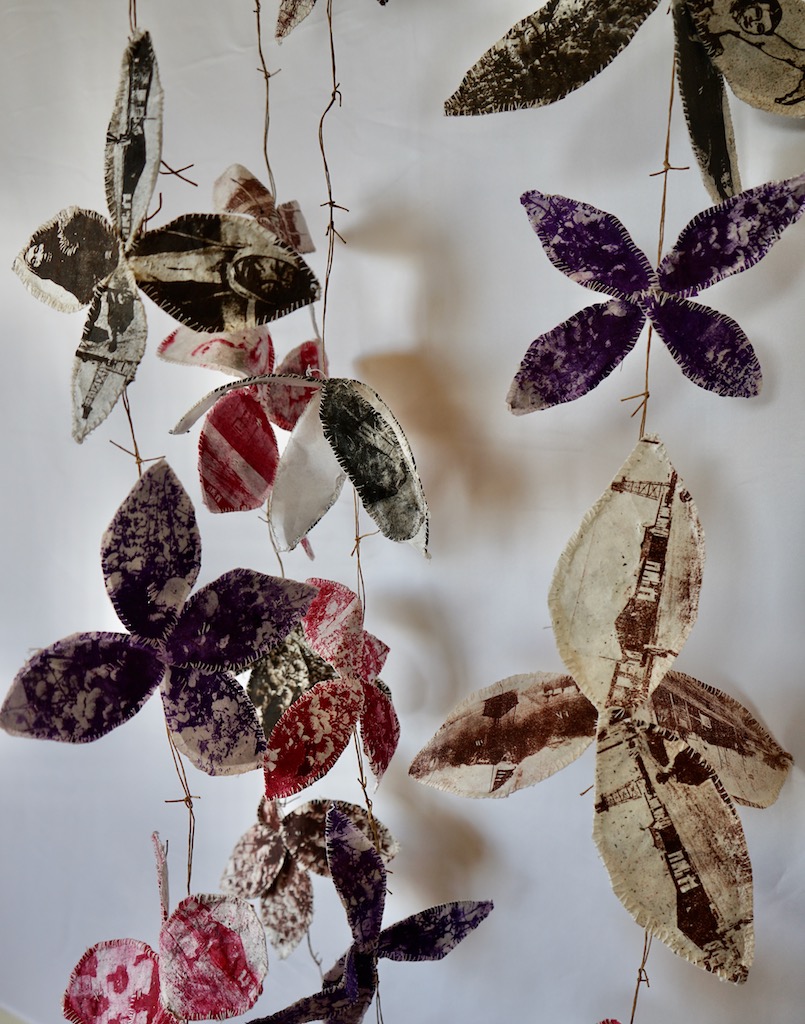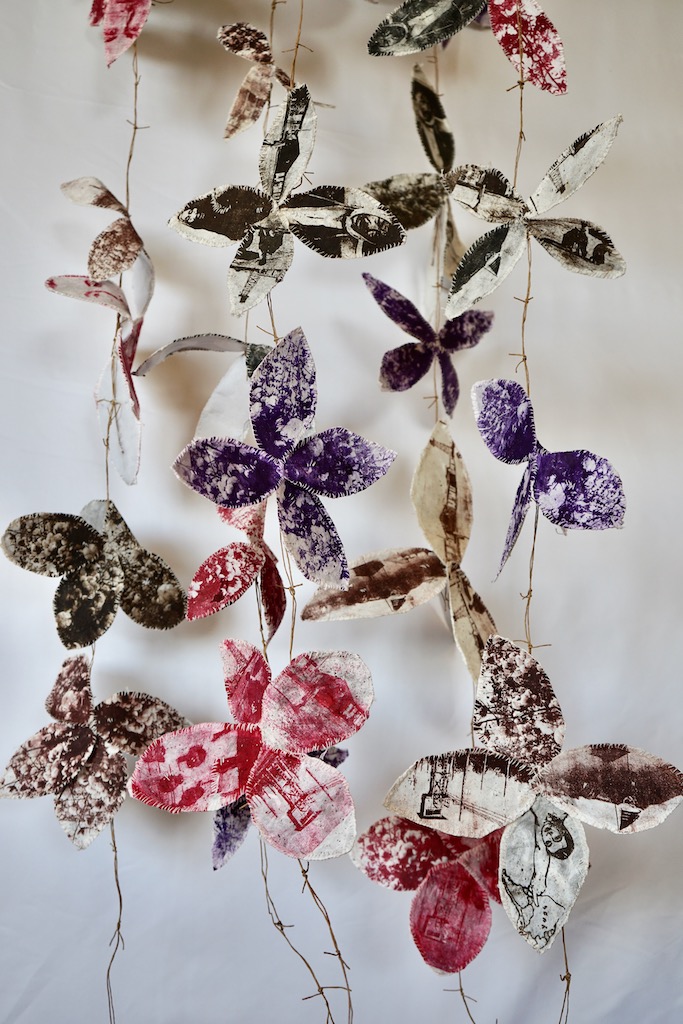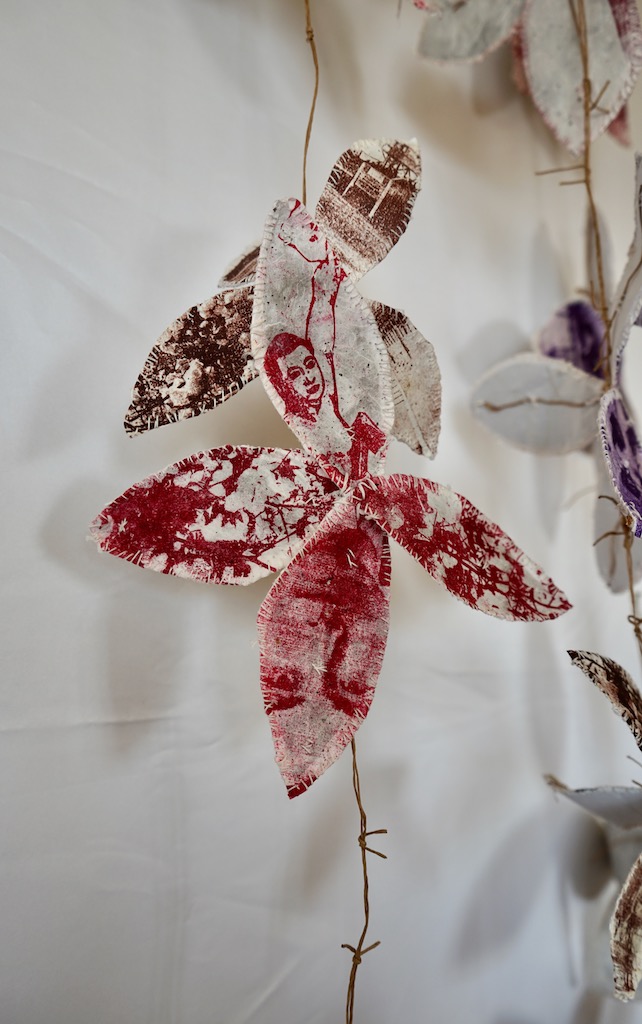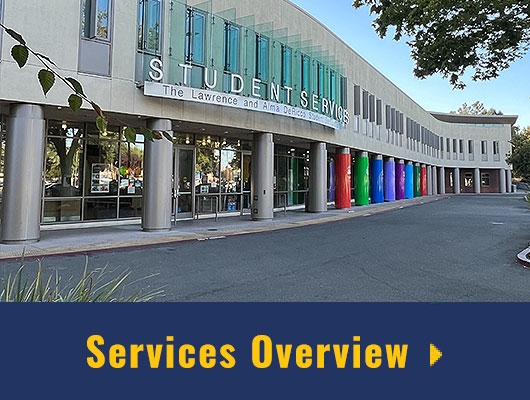
Mending the Past, 2019
photo prints on handmade paper, 72" x 48” x 3”

Mending the Past (detail)

Mending the Past (detail)

Mending the Past (detail)
Mending the Past is composed of 12 handmade papers combining mulberry bark, a traditional element of Japanese papers, and Yerba Buena, a Latin American herb known for its healing and soothing quality. Each piece is stitched using the Japanese technique of Boro used for mending torn fabrics. The images printed in the papers portrait broadly the history of Japanese Americans from their arrival to Latin America working in the agricultural fields, their detainment during World War II and their continued presence in the cultural fabric of Latin America. “I am a Chilean/Japanese artist whose grandparents migrated to South America at the dawn of World War II where they encountered both hospitality and hostility, the effects of World War II and the clash of disparate cultures in the pursuit of their dreams and escaping danger. Mending the Past honors the resilient presence of Japanese people in Latin America by combining some of the traditional crafts of these cultures, paper-making, the use of healing plants, and mending stitching, with the purpose of healing some of their wounds.”

Scattered Seeds of the Cotton Bolls
The Legacy of WW2 on my Japanese Peruvian Family, 2020
cotton boll, prints on handmade paper, size variable
Lydia uses the cotton boll as a symbol for the Japanese presence in Peru and for the first wave of Japanese immigrants who came to work in the cotton plantations. She has created an installation of 20 enlarged bolls hanging from the ceiling made of mulberry fiber and photo etchings of her father and other Japanese Peruvians who were affected by the actions of the governments of Peru and United States during World War II. They were labelled as enemies because of their Japanese ancestry and either deposed to house arrest or expelled from Peru and sent to incarceration centers in the United States. Her installation seeks to evoke the feelings of being scattered and rootless experienced by some descendants of Japanese Peruvians who, because of their parents’ fate, grew up in countries different from their parents. She reflects, “After World War II, my father was forced to escape to Chile. In Peru he had been treated like the enemy, and he had lost all of his family in the bombing of Hiroshima. I was born and raised in Chile where I grew up without an understanding of my father’s sense of alienation and fragmentation. As a Sansei living in California, I aim at understanding the suffering that my father experienced and my own sense of fragmentation and feeling of not belonging.”

Scattered Seeds of the Cotton Bolls (detail)

Scattered Seeds of the Cotton Bolls (detail)

Scattered Seeds of the Cotton Bolls (detail)

Scattered Seeds of the Cotton Bolls (detail)

Scattered Seeds of the Cotton Bolls (detail)







